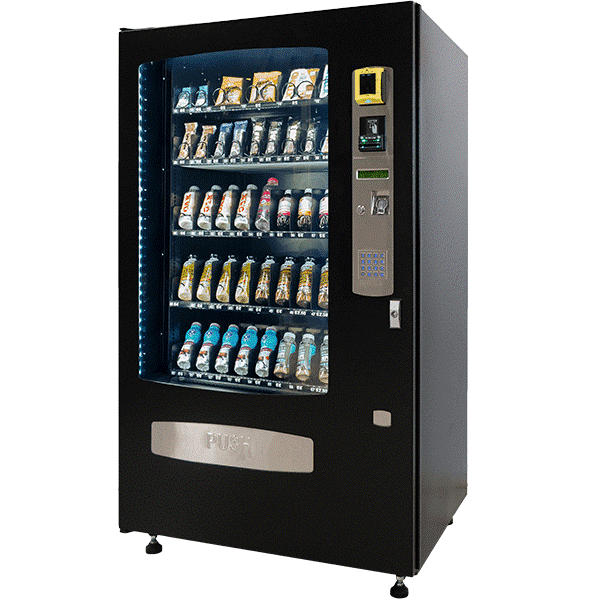In the expansive world of drink and snack machines, where refreshment and sustenance are just a button press away, you’ll find drink dispensers at every turn. These drink machines, like your dependable sidekick, stand ready in offices, schools, and public spaces alike, offering a convenient solution to quench your thirst on the fly. Have you ever paused to ponder the capacity of one of these drink machines, perhaps a Coke Diet vending machine or an energy-efficient model like those housing Pepsi Max? Let’s delve into the realm of drink vending machines and explore the factors that influence how much they can stock, both in terms of beverages and snacks.
Understanding Drink Vending Machines
A drink machine is a staple in the vending industry, known for its ability to dispense a wide array of beverages, ranging from fizzy drinks and juices to bottled water and energy drinks. This machine typically features multiple slots or compartments designed to accommodate different drink options, making it a versatile solution for catering to diverse consumer preferences.
Combination Vending Machines:
Combination vending machines are versatile solutions that offer a mix of both drinks and snacks in a single unit. These machines typically feature separate compartments or shelves for storing beverages and snacks, allowing consumers to choose from a wide range of options in one convenient location.
Drink Vending Machines
Drink vending machines specialise in dispensing a variety of beverages, including sodas, juices, bottled water, and energy drinks. These machines are designed specifically for storing and delivering drinks, often featuring multiple slots or compartments to accommodate different drink sizes and types.
Capacity Variations Across Models
When it comes to determining the capacity of a drink vending machine, several factors come into play, including the size and configuration of the machine, as well as the type of beverages it dispenses. While some vending machines are compact and designed to hold a limited number of drinks, others are larger and capable of storing a more extensive inventory.
Standard Capacity Guidelines
On average, a typical drink vending machine can hold anywhere from 150 to 500 cans, depending on its size and layout. Smaller machines, such as those commonly found in office break rooms or hotel lobbies, may have a capacity ranging from 150 to 300 cans. In contrast, larger machines installed in high-traffic areas like shopping centres or transportation hubs can hold upwards of 400 to 500 cans.
Factors Influencing Capacity
Several factors influence the capacity of a drink vending machine, including:
- Size and Design: The physical dimensions of the vending machine play a significant role in determining its capacity. Larger combination vending machines with multiple compartments or shelves can accommodate more drinks, compared to compact models with limited space.
- Product Mix: The type and size of beverages stocked in the vending machine also affect its capacity. For instance, machines that primarily dispense 375ml cans may have a different capacity compared to those that offer a mix of 375ml cans, 600ml bottles, and other drink options.
- Storage Configuration: The layout and arrangement of the storage compartments within the vending machine impact its overall capacity. Machines with adjustable shelves or modular storage systems may offer greater flexibility in optimising space to accommodate a larger volume of drinks.
- Location and Foot Traffic: The location where the vending machine is installed can influence its capacity requirements. Machines situated in high-traffic areas or densely populated environments may need to hold more inventory to meet demand and minimise restocking frequency.
Optimising Capacity and Inventory Management
Maximising the capacity of a drink vending machine while ensuring efficient inventory management is essential for vending operators to maintain profitability and customer satisfaction. Here are some strategies for optimising capacity and inventory:
- Strategic Product Selection: Choose a mix of popular beverage options that appeal to the target demographic in the location where the vending machine is installed. Conducting market research and monitoring consumer preferences can help in selecting the most in-demand products.
- Regular Restocking: Establish a schedule for replenishing the vending machine with fresh inventory to prevent stockouts and ensure continuous availability of drinks. Analyse sales data to determine peak hours and days of the week, adjusting restocking frequency accordingly.
- Utilise Technology: Explore vending machine management systems equipped with telemetry and remote monitoring capabilities. These systems provide real-time data on inventory levels, sales performance, and machine status, enabling operators to optimise restocking routes and minimise downtime.
- Optimal Pricing and Promotions: Implement dynamic pricing strategies and promotional offers to drive sales and encourage consumers to purchase multiple drinks. Experiment with bundling discounts, loyalty programmes, and seasonal promotions to attract customers and increase sales volume.
Conclusion
The capacity of a drink vending machine varies depending on factors such as size, design, product mix, and location. While there is no one-size-fits-all answer to the question of how many cans a drink vending machine can hold, operators can optimise capacity and inventory management through strategic planning, technology integration, and customer-centric approaches. By understanding the factors that influence capacity and implementing effective strategies, vending operators can maximise profitability and enhance the overall vending experience for consumers.
Contact Us for Vending Machine Solutions!
Looking for vending machine solutions tailored to your needs? Reach out to us today to discuss how we can help you optimise your vending operations and elevate your customer experience.






